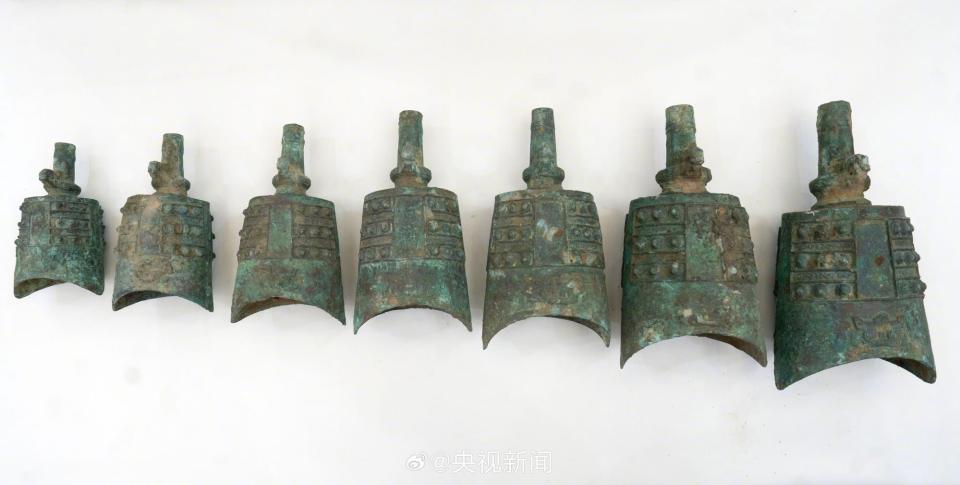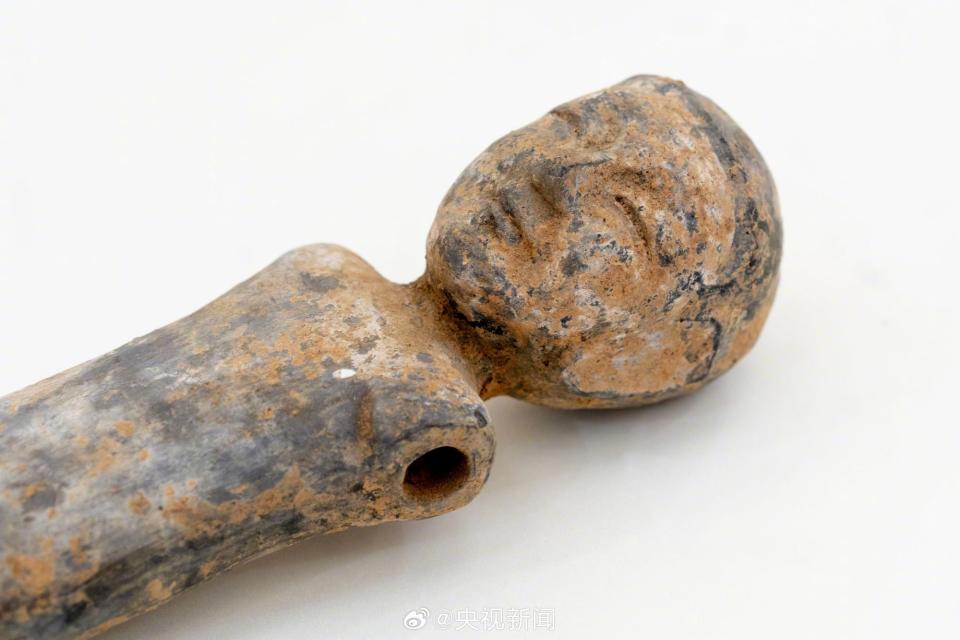Ancient bronze bells, Han dynasty frog among 14 cultural relics returned to China
Argentina has returned 14 cultural relics to China as part of joint efforts to fight the illegal trafficking of cultural heritage.
The artefacts, dating from between 770BC and AD589, were handed over to Chinese ambassador Wang Wei in a formal ceremony at the embassy in Buenos Aires on Thursday.
China's National Cultural Heritage Administration (NCHA) said items had been "illegally exported".
Do you have questions about the biggest topics and trends from around the world? Get the answers with SCMP Knowledge, our new platform of curated content with explainers, FAQs, analyses and infographics brought to you by our award-winning team.
They included seven bronze bells from the ancient Spring and Autumn Period (770BC-476BC), as well as three clay figurines, two clay heads, and a bronze helmet and frog - all dating back to the Han dynasty (206BC-AD220) and the Southern and Northern dynasties (AD386-589), according to the NCHA.
The items were seized in 2017 by the cultural heritage protection division of Argentine police, as part of an Interpol operation code-named Athena, Chinese state news agency Xinhua reported.

Close-up of the bronze bells dating back to the ancient Spring and Autumn Period. Photo: Weibo/ CCTV alt=Close-up of the bronze bells dating back to the ancient Spring and Autumn Period. Photo: Weibo/ CCTV>
Their return reflected the determination of China and Argentina to protect cultural heritage and offered lessons for further cooperation across various fields, Wang said at the ceremony in the Argentine capital.
Argentina and China established diplomatic relations in 1972, and signed a comprehensive strategic partnership deal in 2014. Eight years later, Argentina became the first major South American economy to join the Belt and Road Initiative, Beijing's transcontinental trade, financial integration and infrastructure network.
But there has been some uncertainty over ties since far-right economist Javier Milei became president of Argentina in December. Soon after, he declined an invitation to join the China-dominated Brics group in a move widely regarded as a political distancing from Beijing.
But the move did not necessarily signal an end to the substantial private trade and investment relationship, according to an analysis from the Centre for Strategic and International Studies.
Earlier this month, sources familiar with the matter told the South China Morning Post that Argentina and China were discussing a potential visit to Beijing by Milei, though a date or agenda had not been finalised.
Thursday's handover of the relics was the first such gesture under a 2018 bilateral intergovernmental agreement on cultural property, the NCHA said.
China and Argentina are both members of UN heritage body Unesco's 1970 convention against the "illicit import, export and transfer" of cultural property.
Argentina is also committed to returning illegally trafficked artefacts to their country of origin, under its 2003 archaeological and palaeontological heritage protection law.

One of the Han dynasty clay figurines recovered. All the returned items were included in the International Council of Museums "Red List" for Chinese cultural relics at risk of illegal traffic. Photo: Weibo/ CCTV alt=One of the Han dynasty clay figurines recovered. All the returned items were included in the International Council of Museums "Red List" for Chinese cultural relics at risk of illegal traffic. Photo: Weibo/ CCTV>
The items seized by Argentine police seven years ago were included in the International Council of Museums "Red List" for China, which helps to identify cultural relics at risk of illegal traffic.
China has long sought international cooperation to retrieve lost cultural artefacts. Since 2012, it has signed bilateral agreements with 24 countries, including the United States and Italy, to cooperate on such repatriation, Chinese state broadcaster CCTV said last year.
Over 300 batches of cultural relics, totalling over 150,000 items lost overseas, had been returned to China through law enforcement cooperation, judicial proceedings, negotiated donations and emergent collections since the founding of the People's Republic of China in 1949, CCTV reported in April.
The report came as the US returned 38 pieces of lost relics from the Yuan (1279-1368), Ming (1368-1644) and Qing (1644-1911) dynasties.
The mostly Tibetan Buddhist artefacts were handed over to the Chinese consulate in New York under a 2009 memorandum of understanding relating to illegal imports of Chinese cultural property.
This article originally appeared in the South China Morning Post (SCMP), the most authoritative voice reporting on China and Asia for more than a century. For more SCMP stories, please explore the SCMP app or visit the SCMP's Facebook and Twitter pages. Copyright © 2024 South China Morning Post Publishers Ltd. All rights reserved.
Copyright (c) 2024. South China Morning Post Publishers Ltd. All rights reserved.

 Yahoo Finance
Yahoo Finance 